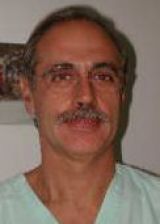prof. Ludovico SBORDONE
Universitą di PISA
Il Prof. Ludovico Sbordone, nato a Napoli nel 1951, é Professore Ordinario di Parodontologia ed Implantologia nell'Universitą di Pisa e componente del Dipartimento di Chirurgia. E’ Direttore del Master di II Livello in Implantologia e Presidente del Corso di Laurea di Igiene Dentale. Ha trascorso vari periodi di aggiornamento, ricerca ed insegnamento all'estero ed in particolare in qualitą di Clinical Associate Professor presso il Dept. of Periodontology, State University of New York at Stony Brook, U.S.A. (dal 1988); come Visiting Assistant Professor presso il Dept. of Periodontology, U.C.L.A., U.S.A.(1985;1987); come Research Scholar presso il Dept. of Periodontology, University of Washington, Seattle,U.S.A. (1980), come Visiting Scientist and Clinical Fellow presso il Dept. of Periodontology, University of Göteborg, Svezia (1982), come clinical and research fellow presso la Stanford University School of Medicine. Relatore a Corsi e Congressi nazionali ed internazionali é autore di oltre 130 pubblicazioni scientifiche nel settore della Parodontologia e della Implantologia pubblicate sulle principali riviste scientifiche internazionali e nazionali. E’ Socio Attivo della Societą Italiana di Chirurgia Orale (SICO) e della Societą Italiana di Parodontologia (SIdP). Gli attuali principali interessi clinici e di ricerca riguardano la chirurgia ricostruttiva a scopo implantare delle deformitą dei mascellari e la rigenerazione guidata dei tessuti parodontali e perimplantari; la microbiologia delle malattie parodontali e perimplantari, le interazioni tra le superfici implantari di titanio e le popolazioni cellulari osteoblastiche. |
|
Int J Oral Maxillofac Surg. 1986 Feb;15(1):39-52.
Marginal tissue reactions at osseointegrated titanium fixtures (I). A 3-year longitudinal prospective study. Adell R, Lekholm U, Rockler B, Brånemark PI, Lindhe J, Eriksson B, Sbordone L. 16 consecutive totally edentulous patients were provided with 95 osseointegrated titanium fixtures in 7 upper and 9 lower jaws. Facultatively removable bridges were later connected to abutments, attached to the fixtures. The marginal soft and hard tissue reactions were investigated at a baseline examination and after 6, 12, 21, 30 and 39 months by standardized clinical and radiographical methods. At the last examination, microbiological samples and gingival biopsies were also analysed. The % ratios of abutments without plaque, 70-75%, and without any gingivitis, 80-85%, were almost constant throughout the study. The mean probing depth was 2.9 mm at the final examination. About 75% of all probing depths were 3 mm or less and none exceeded 5 mm. The bridge-gingiva distances increased during the investigation. Attached gingiva surrounded 65% of the buccal and lingual abutment surfaces. Only 0.9 mm marginal bone was lost as a mean during the first year and not more than 0.05 mm annually for the next 2 years. After 6 months, no significant changes in marginal bone levels occurred. The perifixtural bone gradually became more radiopaque, especially marginally in upper jaws, indicating a successive load-related remodelling. The microbiotia comprised coccoid cells and non-motile rods to 93% in 32 samples. Healthy tissues were present in 35% of the 14 soft tissue biopsies. In a further 29%, only a slight inflammation was observed. No constant correlations could be established for any of the investigation parameters used. It is concluded that the marginal soft tissue reactions were mild and not significant for a progressive periodontitis. Mobility tests of separate fixtures combined with quantitative and qualitative standardized radiological examinations of the surrounding bone appear to provide a truer comprehension of longitudinal events at osseointegrated implants than conventional clinical soft tissue observations. The prognosis for the osseointegrated implants appears excellent, especially with regard to the microbiotia, the small marginal bone height changes, and the radiological indications of remodelling in the perifixtural bone. PMID: 3083005 [PubMed - indexed for MEDLINE] Related Links · Marginal tissue reactions at osseointegrated titanium fixtures. (II) A cross-sectional retrospective study. [Int J Oral Maxillofac Surg. 1986] · Marginal tissue reactions at osseointegrated titanium fixtures. [Swed Dent J Suppl. 1985] · Periodontal aspects of osseointegrated fixtures supporting an overdenture. A 4-year retrospective study. [J Clin Periodontol. 1991] · Periodontal aspects of osseointegrated fixtures supporting a partial bridge. An up to 6-years retrospective study. [J Clin Periodontol. 1992] · A 15-year study of osseointegrated implants in the treatment of the edentulous jaw. [Int J Oral Surg. 1981] |

